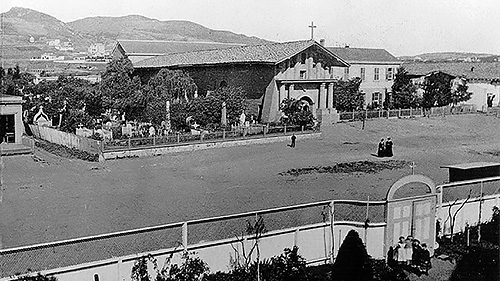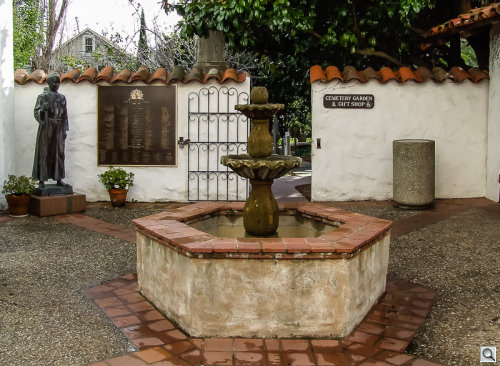Photo Corners headlinesarchivemikepasini.com
![]()
A S C R A P B O O K O F S O L U T I O N S F O R T H E P H O T O G R A P H E R
![]()
Enhancing the enjoyment of taking pictures with news that matters, features that entertain and images that delight. Published frequently.
Friday Slide Show: Mission Dolores Cemetery




17 February 2017
Eleven years ago we made our way through the gift shop at Mission Dolores, paid a small fee to get into the restored mission itself and exited to what was left of the old cemetery. We had a Fujifilm FinePix S5200 with us on an overcast day.
San Francisco had a lot of cemeteries in the 1800s, the final resting places of some 200,000. But in 1900 the Board of Supervisors voted to stop burials within the city and county and subsequently the graves were relocated to Colma, home to a series of beautiful cemeteries including Cypress Lawn Memorial Park, Hills of Eternity, Holy Cross and Woodlawn.
With about five million graves, the dead greatly outnumber the living in Colma. As a local bumper sticker puts it, "It's great to be alive -- in Colma!"
The Mission Dolores cemetery's proper name is San Francisco de Asís cemetery and is one of only two remaining cemeteries in the city, the other being the San Francisco National Cemetery at the Presidio.
It is more of a garden than a cemetery these days, a shadow of its former holdings. Built in 1776, it was about four times the size of what remains next to the mission.
It held 11,000 graves of which about 5,515 were native Americans of the Ohlone and Miwok tribes. The native American graves were consolidated into a group grave on the property while most of the others were moved to Holy Cross, the Catholic cemetery in Colma. A few remain in the garden cemetery and under the floor of the church, as well.
We've been back a few times since, of course. It's part of the tour. But we haven't taken any more photos.
The S5200 had a 10x zoom which was the equivalent of a 38-380mm zoom matched to a 5.1-megapixel sensor and sold for about $400. It didn't have image stabilization, which in a long zoom is not helpful.
We processed the original JPEGs (it did not capture Raw) in Lightroom two ways:
- Our usual method, which sharpens things up with Clarity, recovers Shadow detail and brings back the Highlights (although there wasn't much to recover).
- Applying a Yesteryear preset to a copy of the set after that processing
We discarded the Yesteryear set in favor of the more literal set for today's slide show. The place is itself dramatic enough.

Mission and Cemetery in 1865. A crop of an image from FoundSF.org.
The first tombstone you see is Jallesio Angel Gonzales de Noe who died in 1873 at the age of 24. Patrick Burns' wife Johanna, who died a year later, didn't make it past 39. The boxer James Sullivan "who died by the hands of the V.C." or Vigilantes was just 45. And the little lamb for Theresa Ellis marks the infant's grave after just five days on this earth in 1847.
There are more famous graves. Don Luis Antonio Arguello, the first governor of California, was interred in March 27, 1830. William A. Leidesdorff, the first black pioneer of the city, died May 18, 1848. Don Francisco De Haro, the first alcalde (mayor) of San Francisco, is also here.
And the more notorious, too, are here. Politician James Casey was hung along with the gambler Charles Cora by the friends of newspaper publisher and social reformer James King of William whom Csey shot. And you can find the remains of Cora's wife, the madam Annabella Cora.
Presiding over everything in the center of the garden is Saint Junipero [who-nip'-er-oh] Serra, eyes downcast, sculpted by Arthur Putnam.
Even he, we suspect, doesn't know the story of everyone who was buried here.
